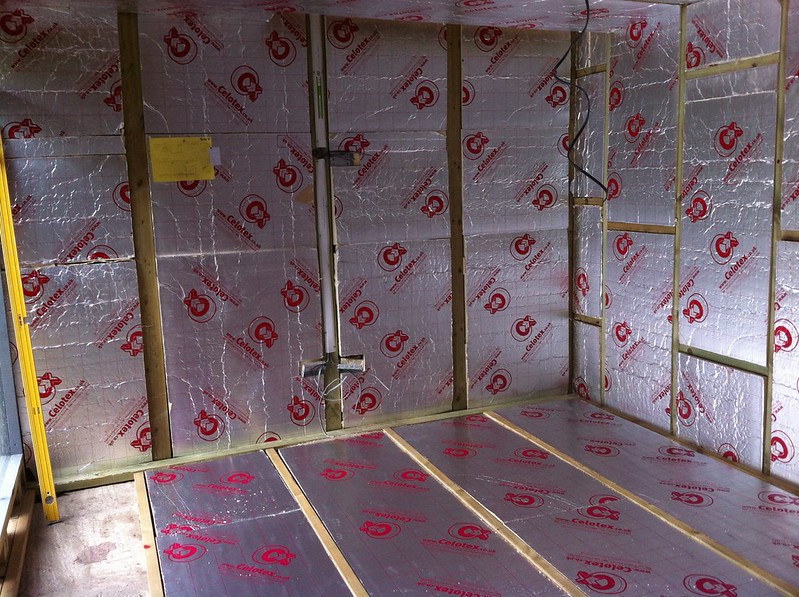Im looking to insulate my shed using celotex and just have a couple of questions in the hope of clearing up some contradictions I have discovered during research.
My shed is pretty heavy duty, constructed out of 3x2 framing and 25mm T&G cladding. Ive read conflicting views about the placement of the celotex, that being to fit it tight up to the cladding so no air gap, or to leave an air gap.
Unfortunately the shed was constructed off site and assembled on site by the supplier and no membrane was installed. I do have a little water ingress poss due to a knot or shrinkage in a joint which I will remedy.
I was going to fit the 75mm celotex right up to the cladding, then board the inside with OSB or other. I assumed that the foil backing on the celotex would act as a vapour barrier, along with the OSB (which I would also paint/treat). In my head, the warm air would be contained within the shed and the insulation would prevent the internal warm and cold outer surfaces from forming moisture.
I dont really understand the need for an air gap between the inside of the cladding and the celotex, as this will also be a sealed space with no airflow.
Would appreciate some clarification before I commit!
Cheers
My shed is pretty heavy duty, constructed out of 3x2 framing and 25mm T&G cladding. Ive read conflicting views about the placement of the celotex, that being to fit it tight up to the cladding so no air gap, or to leave an air gap.
Unfortunately the shed was constructed off site and assembled on site by the supplier and no membrane was installed. I do have a little water ingress poss due to a knot or shrinkage in a joint which I will remedy.
I was going to fit the 75mm celotex right up to the cladding, then board the inside with OSB or other. I assumed that the foil backing on the celotex would act as a vapour barrier, along with the OSB (which I would also paint/treat). In my head, the warm air would be contained within the shed and the insulation would prevent the internal warm and cold outer surfaces from forming moisture.
I dont really understand the need for an air gap between the inside of the cladding and the celotex, as this will also be a sealed space with no airflow.
Would appreciate some clarification before I commit!
Cheers


